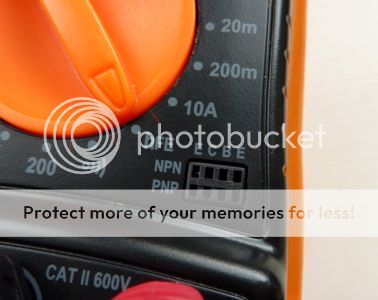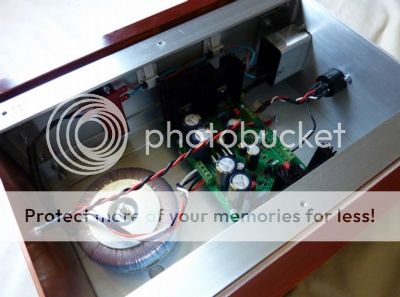For the last couple of months I have been focusing my attention on my current project, a β22 (beta22) headphone amplifier and σ22 (sigma22), its accompanying linear regulated power supply.
You join me still in the process of building the casework and ferreting away the multitude of parts needed.
For those unaware, this is a highly regarded high-end DIY only design much liked for its transparency and power. Like my previous M³, this is not commercially available so it's pretty much up to you to put one together yourself. I'm really curious to see if this will be an improvement over the aforementioned amp, the promise of more power to allow for a better sound stage and imaging as well as smoother sound has me interested enough to invest my time and money in this project. Hope it will be worth it!
For now I'm going to concentrate on layout and case design of the amplifier - a bit backwards I know, but a significant amount, if not the most work in a DIY build goes on the casework. I'll talk about the electronic side of things and technicalities as best as I can later on when I start populating the boards, hopefully around Easter time.
~Design~
Firstly the modular design of the β22 is quite flexible, each board contains one channel only allowing for different configurations -
- as a standard two channel amp with a passive ground (two boards)
- two channel with an "active ground" (three boards)
- four boards for balanced, one for each phase of both channels (L+,L-,R+,R-)
- balanced and single-ended operation in the same unit (four or six boards)
Some people have also used dual σ22 power supplies for separate channels, of course all of this adds to the complexity and cost of the build.
Also worth noting is that the β22 can be used as a pre-amp and speaker power amp too, so you really need to consider your options carefully before attempting to build one.
As in this case I'm not interested in a balanced design and I'd like to keep things as compact and simple as possible I decided on a 3-channel single PSU configuration.
Originally I was not going to build any casework, instead the σ22 was going to be housed in a smallish Hammond enclosure and the amp would go in a medium sized HiFi 2000 Galaxy Maggiorato case from Modushop, all I would need to do was simply drill a few holes...
But as I'm mad and like to make things, I eventually decided on a design for the cases.

I began getting some ideas together around mid January. Originally I was going to use 5mm aluminium plate for the top and base of each case as well as 10mm thick copper for the face plates and 5mm for the back, but working with thick metal can be a pain, especially drilling and mounting panel components, so sensibly I ordered 3mm sheet instead. The sides are made from any wood I can get my hands on, in this case a couple of chopping boards that I've stained and varnished, I may see if I can find something a little nicer in the future as I'm not totally happy with the way they look at the moment.

This is the design that I eventually decided on, it is slightly reminiscent of the older gold Sony ES components. I like the look of copper so I kept that just for the front panels. As aluminium is easy to work with, the panels that need the most drilling will be made from it, this should contrast nicely with the dark wood and copper to give the amp a minimalist but interesting look.
The internal components will be laid out like this .

Firstly the PSU - This enclosure will contain the σ22 printed circuit board and transformer. I'm using a filtered IEC module from Schurter for the power inlet. As I still consider myself a novice and have never before now dealt with live voltages this seems to be the tidiest and safest way to work. This unit contains the power switch, fuse holder and IEC power socket in one device, the transformer primaries simply attach to the live and neutral connectors and the earth is bolted to the case.
The outgoing DC power leaves the PSU via a Neutrik PowerCon socket on the rear, this is a good quality locking connector designed especially for power applications.
The amp enclosure will house the three PCBs from the middle to the front of the unit. I've decided to mount the selector switch and volume pot on a bracket at the rear, both will be connected to knobs mounted on the front panel by 6mm extension rods. The PSU and amp will be connected together by a 3-conductor umbilical, this contains the V+,V- and power ground wires.
That basically covers the design, next we'll concentrate on the construction of the cases.
You join me still in the process of building the casework and ferreting away the multitude of parts needed.
For those unaware, this is a highly regarded high-end DIY only design much liked for its transparency and power. Like my previous M³, this is not commercially available so it's pretty much up to you to put one together yourself. I'm really curious to see if this will be an improvement over the aforementioned amp, the promise of more power to allow for a better sound stage and imaging as well as smoother sound has me interested enough to invest my time and money in this project. Hope it will be worth it!
For now I'm going to concentrate on layout and case design of the amplifier - a bit backwards I know, but a significant amount, if not the most work in a DIY build goes on the casework. I'll talk about the electronic side of things and technicalities as best as I can later on when I start populating the boards, hopefully around Easter time.
~Design~
Firstly the modular design of the β22 is quite flexible, each board contains one channel only allowing for different configurations -
- as a standard two channel amp with a passive ground (two boards)
- two channel with an "active ground" (three boards)
- four boards for balanced, one for each phase of both channels (L+,L-,R+,R-)
- balanced and single-ended operation in the same unit (four or six boards)
Some people have also used dual σ22 power supplies for separate channels, of course all of this adds to the complexity and cost of the build.
Also worth noting is that the β22 can be used as a pre-amp and speaker power amp too, so you really need to consider your options carefully before attempting to build one.
As in this case I'm not interested in a balanced design and I'd like to keep things as compact and simple as possible I decided on a 3-channel single PSU configuration.
Originally I was not going to build any casework, instead the σ22 was going to be housed in a smallish Hammond enclosure and the amp would go in a medium sized HiFi 2000 Galaxy Maggiorato case from Modushop, all I would need to do was simply drill a few holes...
But as I'm mad and like to make things, I eventually decided on a design for the cases.

I began getting some ideas together around mid January. Originally I was going to use 5mm aluminium plate for the top and base of each case as well as 10mm thick copper for the face plates and 5mm for the back, but working with thick metal can be a pain, especially drilling and mounting panel components, so sensibly I ordered 3mm sheet instead. The sides are made from any wood I can get my hands on, in this case a couple of chopping boards that I've stained and varnished, I may see if I can find something a little nicer in the future as I'm not totally happy with the way they look at the moment.

This is the design that I eventually decided on, it is slightly reminiscent of the older gold Sony ES components. I like the look of copper so I kept that just for the front panels. As aluminium is easy to work with, the panels that need the most drilling will be made from it, this should contrast nicely with the dark wood and copper to give the amp a minimalist but interesting look.
The internal components will be laid out like this .

Firstly the PSU - This enclosure will contain the σ22 printed circuit board and transformer. I'm using a filtered IEC module from Schurter for the power inlet. As I still consider myself a novice and have never before now dealt with live voltages this seems to be the tidiest and safest way to work. This unit contains the power switch, fuse holder and IEC power socket in one device, the transformer primaries simply attach to the live and neutral connectors and the earth is bolted to the case.
The outgoing DC power leaves the PSU via a Neutrik PowerCon socket on the rear, this is a good quality locking connector designed especially for power applications.
The amp enclosure will house the three PCBs from the middle to the front of the unit. I've decided to mount the selector switch and volume pot on a bracket at the rear, both will be connected to knobs mounted on the front panel by 6mm extension rods. The PSU and amp will be connected together by a 3-conductor umbilical, this contains the V+,V- and power ground wires.
That basically covers the design, next we'll concentrate on the construction of the cases.



































